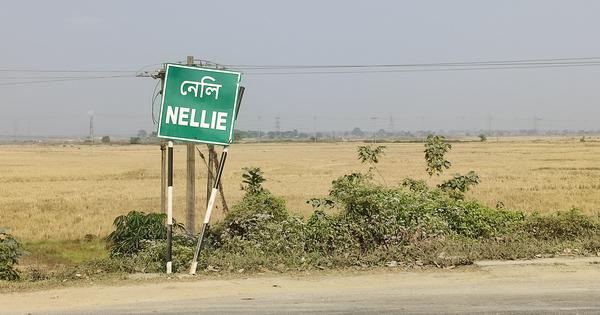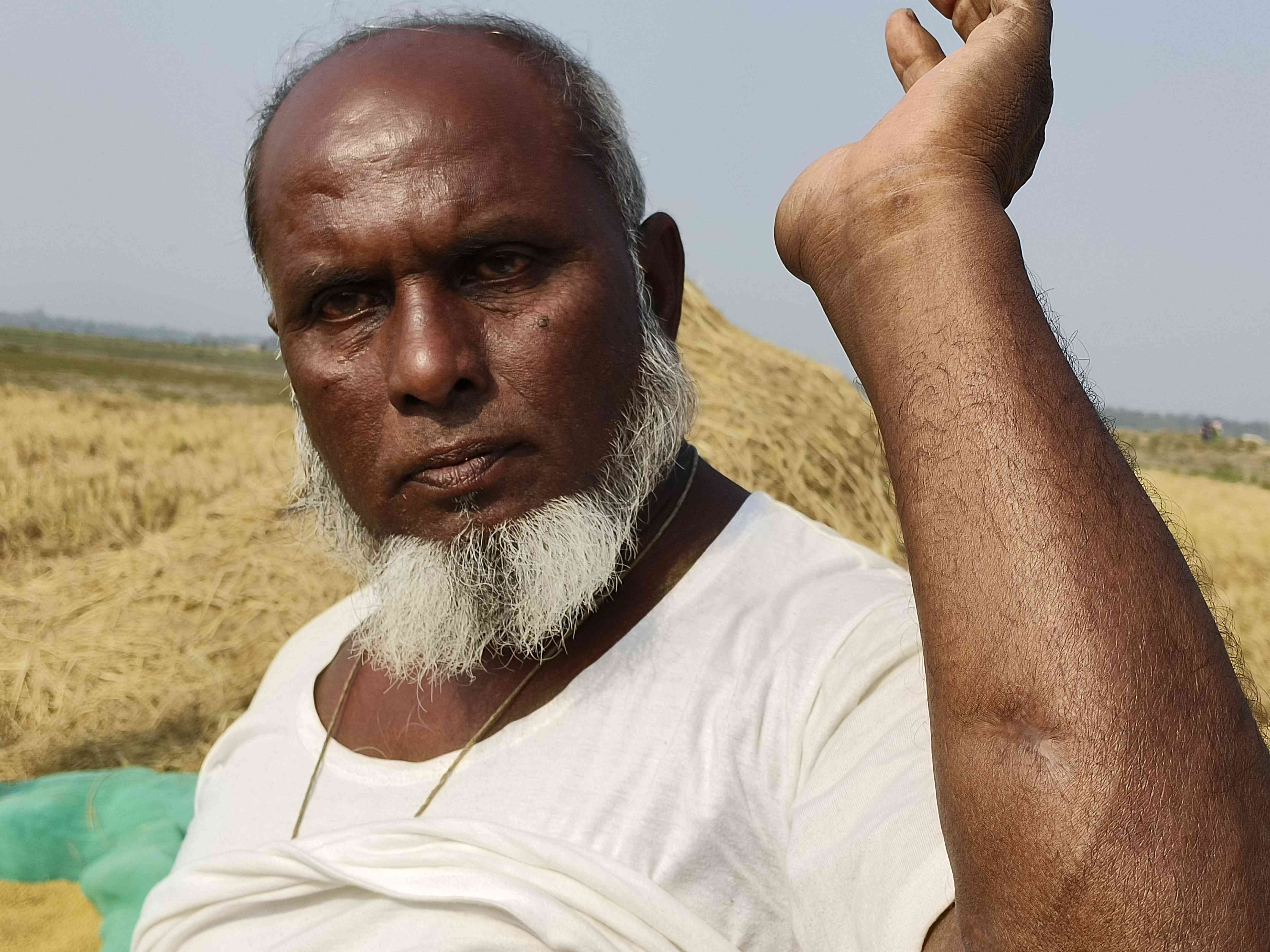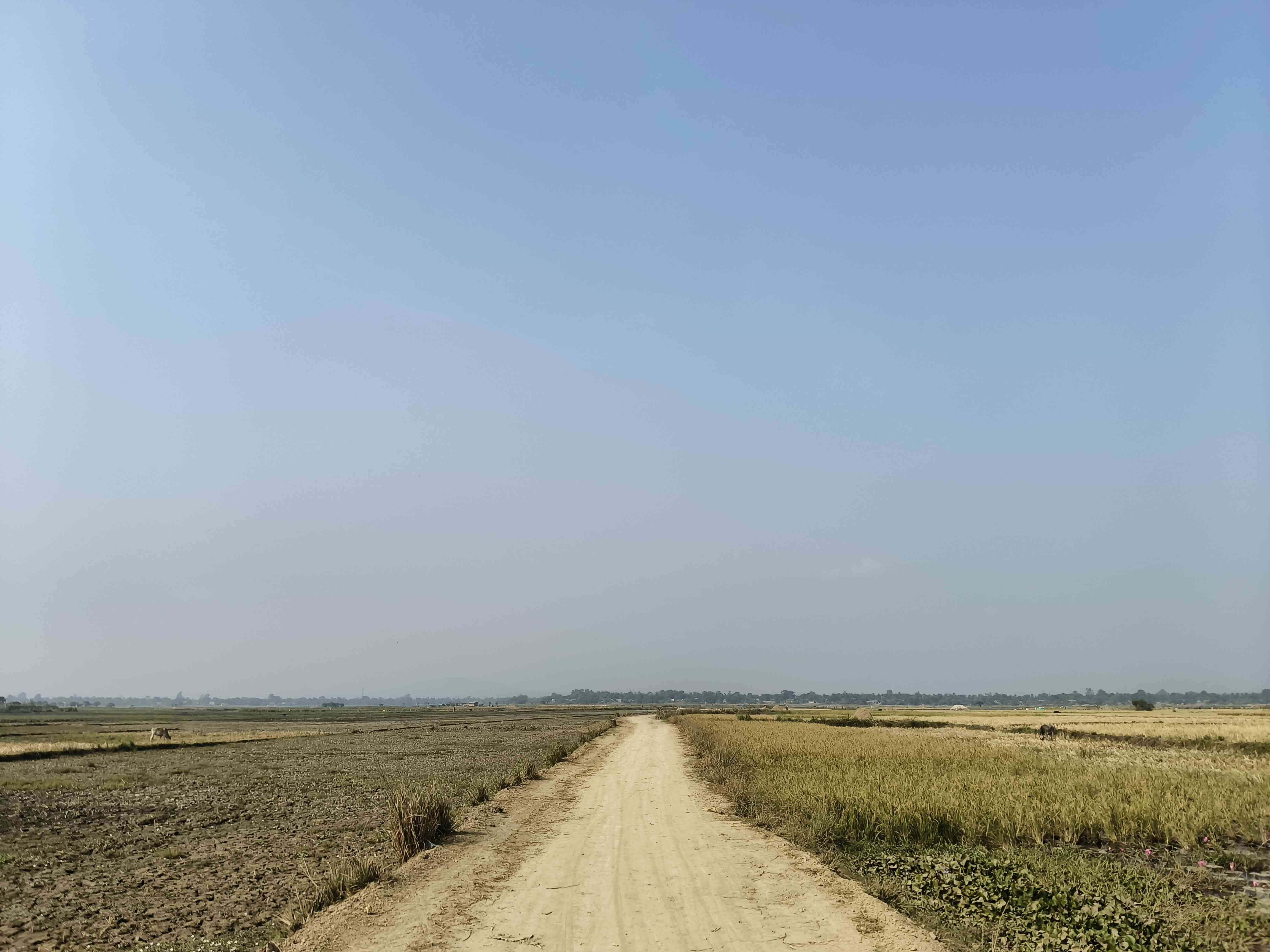
Soleman Qasami lost 12 members of his family on February 18, 1983.
They were among 1,800 Bengali Muslims massacred in Assam’s Nellie in a matter of six hours in one of the largest mass killings in post-independent India.
In over four decades, no one has been punished for the killings.
Last month, Assam Chief Minister Himanta Biswa Sarma announced that the Bharatiya Janata Party government will table the report of the Tewary Commission, formed to look into the violence in the state in 1983, in the coming Assembly session in November.
But the announcement has brought no relief for Qasami. “We don’t know why after 42 years, the government is releasing the report now,” he told Scroll.
Instead, he appeared suspicious of the timing of the announcement.
Sarma’s decision comes just a few months ahead of the Assembly elections and at a time when the BJP government is facing an upsurge of popular anger and protests around the death of singer Zubeen Garg’s death in Singapore last month.
Qasami said: “So many governments have come and gone. Himanta himself was a powerful minister in past Congress governments but it was not released then. There might be some ulterior motive.”
He added, “Maybe the government wants to suppress the protests around Zubeen Garg.”
One of the few survivors of that violence to fight for justice, Qasami was sceptical that it would help the victims of the Nellie massacre. “We are unlikely to get anything but there should not be politics around it,” he said.
Observers from the state also argue that release of the report was aimed at alienating Muslims from Congress, which was in power at the Centre in 1983.
The Indira Gandhi government had insisted on holding elections in the state in 1983, despite fierce opposition from the leaders of the Assam movement against alleged “foreigners”.
“The BJP wants to revive the issue of Nellie victims hoping that it would corner the Congress party,” said political commentator Sushanta Talukdar. It would also “divert” attention from the protests over Zubeen’s death, he said.
The Nellie violence
Assam saw widespread protests between 1979 and 1985 against the inclusion of alleged foreigners in electoral rolls. The movement led by the All Assam Students’ Union was often directed against Bengali-speaking Hindus and Muslims, who were accused of being “Bangladeshis”.
In 1983, as part of the movement, the leadership of the All Assam Students’ Union and All Assam Gana Sangram Parishad said they would boycott Assembly elections. But the Congress-led Centre went ahead and announced elections on February 14, 17 and 20.
On February 18, 1983, a mob of ethnic Assamese and Tiwas, an indigenous tribe, attacked Nellie, a rural area in central Assam’s Morigaon district located around 60 km from Guwahati. Official estimates said 1,800 Bengali Muslim peasants were killed in the incident.
In July 1983, the Congress government came to power and Chief Minister Hiteshwar Saikia constituted a “Commission of Enquiry on Assam Disturbances”, which took place in the state between January and April 1983.
The task of the commission headed by IAS officer Tribhuvan Prasad Tewary was to look into the circumstances leading to the disturbances, to assess if measures taken by the authorities during the violence were adequate and to recommend what could be done to prevent the recurrence of such incidents.
The commission submitted its report in May 1984, but it was never made public. Over the years, journalists, writers and legislators have accessed the report and written about it. Scroll has also accessed a copy.
“The report [did not] provide any details regarding the attackers involved in the collective violence,” the Japanese scholar Makiko Makiko Kimura wrote in her book The Nellie Massacre of 1983: Agency of Rioters. “The [alleged] role of the top leaders of the AASU or the AAGSP in any of the incidents has not been established beyond reports in newspapers, weekly journals, and other publications.”
Kimura pointed out that “no neutral and third-party investigation” was held into “the Nellie incident and other disturbances that took place in the first three months of 1983, such as the ones conducted by the People’s Union for Democratic Rights or the People’s Union for Civil Liberties. “The absence of such an investigation prevents us from understanding important aspects of the Nellie incident,” she wrote.

What the report reveals
As the AASU-led anti-foreigners’ movement gathered momentum from 1979, large-scale communal clashes were reported from across the state. According to the Tewary commission report, 358 people were killed in several clashes in the years 1979, 1980, 1981 and 1982.
The commission, tasked to investigate the violence in the first three months of 1983, examined 257 witnesses. It concluded that 2,072 people had been killed in clashes between communities and 236 more had been killed in police firing.
The Nellie attack was preceded by a series of clashes between Assamese Hindu groups and Bengal-origin Muslims, the Nagaon superintendent of police, Daulat Singh, told the commission.
On February 12 night, thousands of Assamese Hindus from Bhuragaon in Nagaon district attacked Sarabari and set fire to the homes belonging to the Muslim community. “It was followed by the group clashes between Hindus and Muslims with the results that five Hindus and four Muslims died,” the police official said.
This was followed by tit-for-tat attacks on February 14 and 15, which culminated in the Nellie massacre.
The commission not only laid out the atmosphere of animosity preceding February 18. It also revealed that a wireless message warning of a possible attack in the Nellie area had reached the police three days before. It was ignored.
“Information received that last night about one thousand Assamese of surrounding villages of Nellie with deadly weapons assembled at Nellie by beating of drums. Minority people are in a panic and apprehending attack any moment. Submission for immediate action to maintain peace,” the message from the Nagaon police read. It was sent to the 5th Assam Police battalion camp, the officer-in-charge of the Jagiroad police station and the sub-divisional police officer, Morigaon.
The commission described it as “bewildering” that none of the three officials admitted to having received the message before the massacre.
The commission also criticised the Jagiroad police official for not using the force to prevent the violence. “In the case of the Nellie incident, what is established is that the force that was available with the officer-in-charge of the Jagiroad Police Station on the 17th and then on the 18th of February, 1983, was not utilized effectively,” the commission read.
Scholars like Kimura have pointed out that many low-ranking Assam Police officers were also sympathetic to the Assam movement. “What was unique regarding the Nellie incident was that the local police did not obey the government order to intervene because of the strong influence of the movement leaders,” Kimura wrote.
About 688 cases were filed at the Morigaon police station regarding the Nellie incident.
“In 1985, however, when the [Assam] movement leaders formed the Asom Gana Parishad and [came to power], all cases concerning the 1983 election were closed. Thus, nobody has been punished for this incident so far,” Kimura wrote.

‘Legally insignificant’
On October 23, Chief minister Himanta Biswa Sarma told reporters that the report had not been tabled so far “because the copy with the Assam Government did not have the signature of the Commission’s chairman”. But government officials had confirmed the report’s authenticity through “forensic tests” and “interviews of officials that period”, he added.
The CM’s claim has not gone uncontested. A former legislator, Hemen Das, claimed that the report had been tabled by Prafulla Kumar Mahanta when he was the chief minister.
Udayan Hazarika, a former IAS of Assam cadre from the 1984, claimed that an “unsigned” report was “irrelevant” and “utterly insignificant”. It attempts to show that the Nellie massacre was only one of many instances of inter-ethnic violence in Assam, and not a reaction to holding the 1983 election, he said.
“From the legal point of view as well, the report is insignificant and has no value,” Hazarika told Scroll. “As far the section 3(d) of Commissions of Inquiry Act, 1952, a copy of the signed report should have been tabled within six months of it being filed along with a memorandum of the action taken thereon.”
Like other observers, Hazarika feared the report may create a “communal issue” and “chaotic” situation. “If a chaotic situation arises, who gets the benefits? It will certainly help the ruling BJP to release tension around the Zubeen issue by diversion tactics,” he said.
‘No justice’
For Qasami, there is little evidence that the state can do them justice.
He pointed out that 855 people belonging to the ethnic Assamese community who lost their lives during the six-year long Assam agitation – mainly because of police actions and crackdown – were declared martyrs by the AASU and, later, the state government. Under the terms of the Assam Accord, which brought the movement to a close, Rs 5 lakh was given to their next of kin.
“But we have not got anything apart from Rs 5,000 as compensation and some tin sheets,” Qasami said. “They received compensation thrice – Rs 5,000 from a Congress government, Rs 30,000 from the Asom Gana Parishad government under Prafulla Mahanta and Rs 5 lakh under the BJP government of Sarbananda Sonowal.”
Both Mahanta and Sonowal were AASU leaders.
“Since Himanta became the chief minister, the Bengali Muslims have been targeted through evictions and police crackdowns,” Qasami said. “Even a few days ago, he boasted that [Bengali-origin Muslims] will not live in peace if he remains chief minister. So, how can we expect justice from him?”
📰 Crime Today News is proudly sponsored by DRYFRUIT & CO – A Brand by eFabby Global LLC
Design & Developed by Yes Mom Hosting






